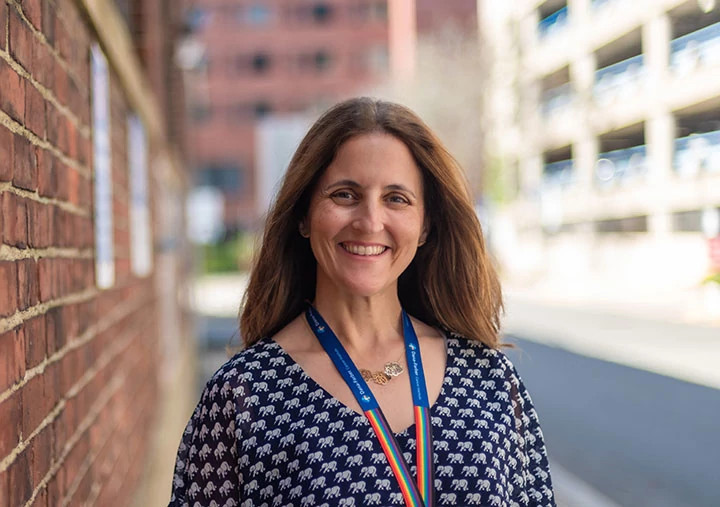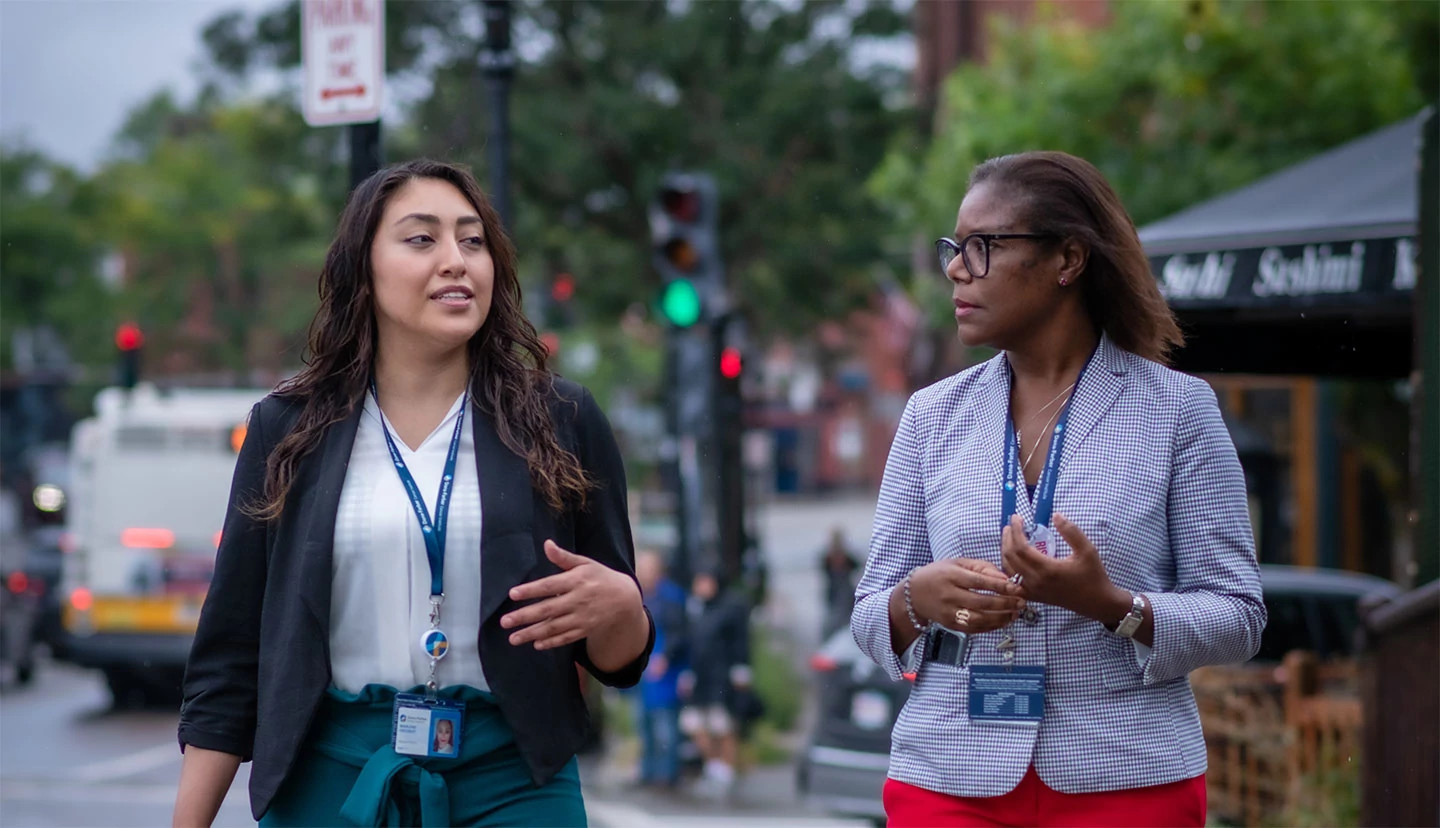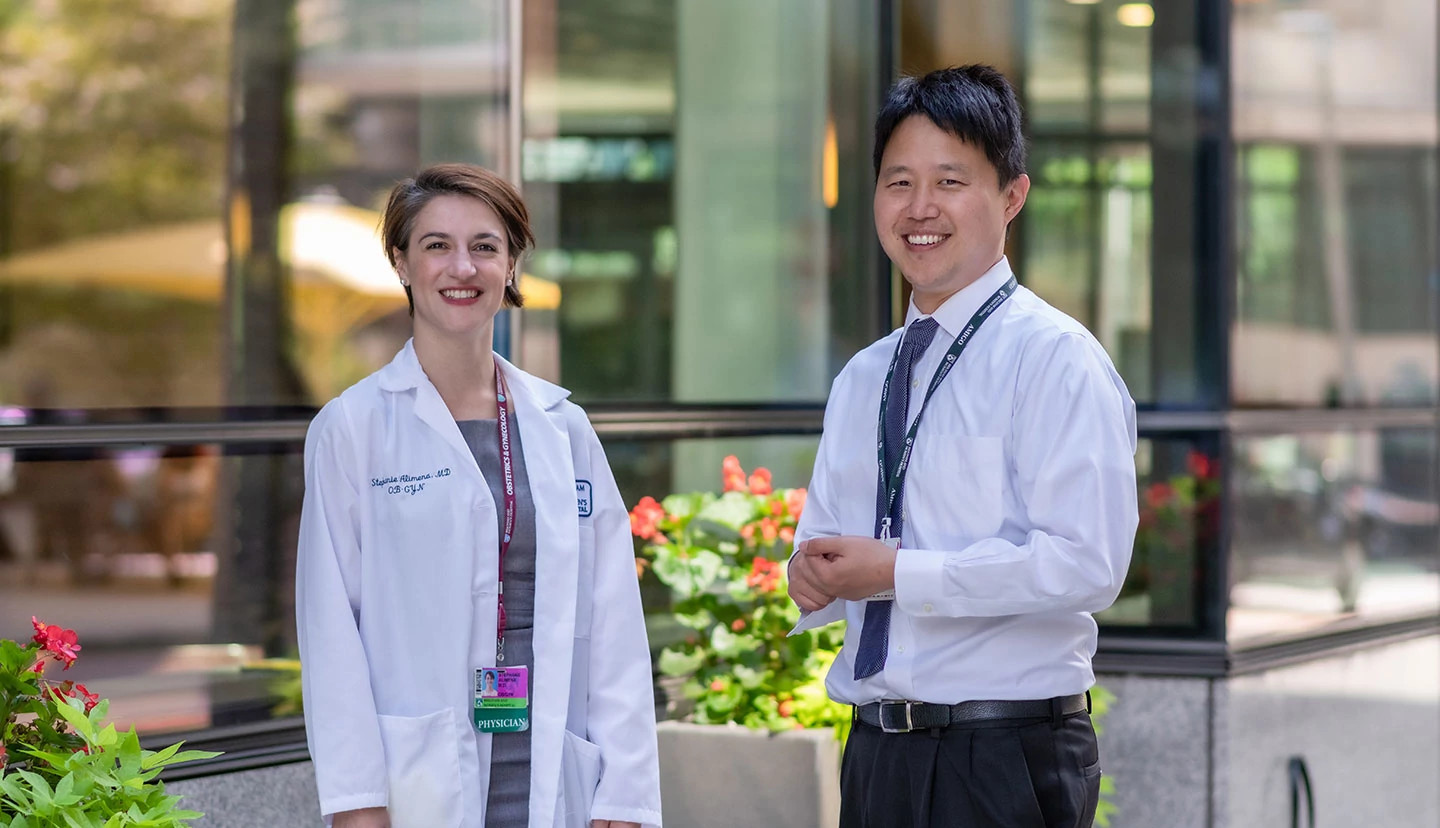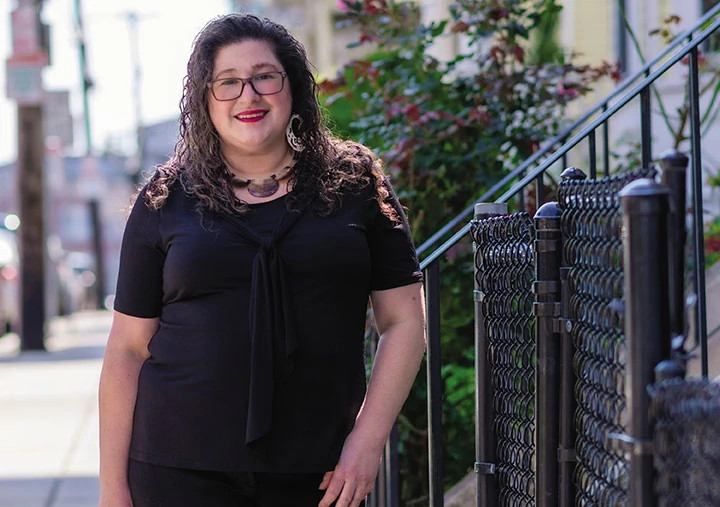To Eliminate Cancer Disparities, It Takes a Center
November 17, 2021
Inclusion, Diversity, and Equity
Susan F. Smith Center
by Saul Wisnia
Dana-Farber's Work to Improve Patient and Community Access to Cancer Care
The COVID-19 pandemic may have helped raise the public's collective attention to racial disparities in health care, but faculty and staff within Dana-Farber and its Susan F. Smith Center for Women's Cancers needed no reminders. At the local and national level, they have long been at work addressing these problems – along with inequities due to socioeconomic status, geographic location, gender identity, age – as they exist for those dealing with breast and gynecologic cancers.
Through programs, research, and community-based outreach efforts, clinicians, scientists, and support staff are committed to improving access, delivery, and outcomes for all individuals needing care.
In 2014, Dana-Farber and the Boston Public Health Commission led the formation of the Boston Breast Cancer Equity Coalition (BBCEC) in response to persistent city-wide disparities in breast cancer mortality among minority, low-income patients. The BBCEC is focused on eliminating disparities in breast cancer care and outcomes due to race, ethnicity, or financial challenges through community partnerships, educational programs, support networks, and by advocating for Boston and Massachusetts legislation relevant to breast cancer.
BBCEC initiatives include a series of Facebook Live seminars with medical experts on breast cancer protocols during COVID-19; establishment of the Pink and Black Education and Support Network, which has worked with the Pink and Black Ambassadors – a group of Black breast cancer survivors – to increase awareness, outcomes, and quality of life for Black patients and survivors around the disease; and introduction (in collaboration with Dana-Farber) of the Breast Cancer Equity and Early Detection Bill into the Massachusetts State Legislature. The bill would ensure patients can access diagnostic breast imaging with no out-of-pocket costs.
Rachel Freedman, MD, MPH, a breast oncologist in the Susan F. Smith Center, was one of the BBCEC's founders. Today she is co-chair of the group, along with Sharon Bak, MPH, of Boston Medical Center.

"We were an organic collaboration of people who wanted to make a difference in our city," Dr. Freedman says. "Our goal now is to be the resource in Boston when it comes to supporting those at most risk for poor outcomes once they are diagnosed with breast cancer, so they get whatever they need. The pandemic postponed care for many, and we need to get people back in for breast screening and other preventive care."
Helping Patients Get Needed Care
One way to meet such goals, Dr. Freedman says, is by building on already proven initiatives. For nearly 20 years, Dana-Farber's Patient Navigator Program has paired vulnerable patients with bilingual professionals called patient navigators who help with basic but important needs like transportation to appointments, scheduling visits, and understanding information patients get from their health care providers. Traditionally, navigators are connected with patients who have a breast or cervical cancer diagnosis or have received an abnormal finding on a breast or cervical cancer exam, such as a Pap smear.
In 2021, Marlene Escobar became the first patient navigator dedicated to one Dana-Farber treatment center: the Breast Oncology Center. Escobar works directly with Dr. Freedman and other clinicians to identify specific issues faced by their patients, with a focus on reaching out to individuals from Greater Boston neighborhoods with the greatest needs – Dorchester, Mattapan, Mission Hill, and Roxbury. This allows her to be the most proactive in helping patients throughout their treatment course.
"We want to be prepared to address – and anticipate – some of the needs these patients might have, such as unemployment, financial problems, and food insecurity," says Magnolia Contreras, MSW, MBA, vice president of Community Benefits at Dana-Farber. "The goal is to identify a patient as early as possible, get to know the patient as early as possible, and be able to respond quickly and thoughtfully to their needs, starting with calling to help them before their first appointment."

Building further on this early-outreach model, Escobar will work with partnering community health centers and other primary care practices throughout Greater Boston and Massachusetts to establish a smoother process by which they can refer patients to the Susan F. Smith Center. The eventual goal, says Contreras, is to have a patient navigation service that is community focused.
Educational programs around cancer prevention, another vital resource in the fight against disparities, were aided by one of the few positive developments to come out of the pandemic: the rise of virtual events. While in-person workshops might draw 20 or so participants due to challenges including transportation and childcare, a Zoom-based prevention and education event focused primarily on gynecologic and breast cancer and led by Dana-Farber's Community Benefits office in October 2020 drew more than 100 attendees.
"Partnering with other local organizations that have established online communities, we've been able to reach a number of audiences that we might not otherwise have been able to reach," says Contreras. "There is an engagement and intimacy that occurs online, and even for smaller workshops the attendance has been strong and consistent. We know that this is where opportunities lie for us going forward, and we could not be more thrilled."
Identifying Barriers – and How to Overcome Them
A key to addressing and eventually eliminating disparities is taking the proper steps to better understand what causes them in the first place. During the past decade, Dana-Farber staff have contributed to numerous research studies probing the reasons for variances in breast and gynecological cancer incidence and mortality.

"We've worked very hard here and with colleagues across the country to disentangle – and document – what causes racial, ethnic, and socioeconomic disparities," says Alexi Wright, MD, MPH, director of Gynecologic Oncology Outcomes Research at Dana-Farber. "The key now is addressing these issues head-on."
Through efforts including establishment of a Disparities Research and Implementation Task Force at Dana-Farber/Harvard Cancer Center, Dr. Wright and colleagues are working on solutions to inequities like those uncovered by clinical gynecologic oncology fellow Stephanie Alimena, MD, and radiation oncologist Martin King, MD, PhD. In their study of more than 16,000 women in the National Cancer Database treated for cervical cancer between 2004 to 2016, they found that a primary reason Black women have the highest incidence and mortality from this disease in the United States is because they are far less likely to receive a specific type of radiation – brachytherapy – that is especially effective in treating advanced cervical cancer.

"This trend held across the country," says Dr. Alimena. "Black women who didn't have brachytherapy had much lower survival rates, but if they did get brachytherapy, their survival was completely equivalent to that of white women. We found that women of all races were less likely to receive brachytherapy in the southern and western United States, where there are far fewer physicians trained in brachytherapy and a paucity of radiation treatment centers. There is a higher concentration of Black women who live in the South, so that is likely a factor."
While this research is helpful, Drs. Alimena and King know getting Black patients access to brachytherapy is only one factor in eliminating cervical cancer disparities.
"The human papillomavirus (HPV) causes roughly 90% of cervical cancers," says Dr. King. "While overall incidence of cervical cancer is declining because of HPV vaccination, disparities in screening and vaccinations persist. At Dana-Farber, our general cervical cancer population is much more disadvantaged than our typical endometrial or prostate cancer population. They come from different parts of the state, and a lot of them have a lot more barriers to care and are getting diagnosed later."
Drs. King and Alimena believe that focusing more on targeted interventions, similar to what is being done in underserved communities adversely affected by the COVID-19 pandemic, could be key to lessening the cervical cancer gap.
"We did a spinoff study looking at age and race, and found that younger Black women under 40 were more likely to present with higher-stage disease and have worse survival outcomes than younger non-Black women," says Dr. Alimena. "It may be insurance barriers causing this. Younger Black women are more likely to be uninsured or underinsured than older Black women, who at age 65 have access to Medicare." As a result, the younger women are not being diagnosed until they reach late-stage situations.
Dr. Alimena feels partnering oncologists with primary care physicians in the community, who can encourage their patients to follow-up on abnormal Pap smears with colonoscopies, may help. She is part of another proposed study that will test this theory, utilizing the help of two Dana-Farber patient navigators.
Even in those cases when a cancer is found, treated, and eliminated, Dr. Wright says, health disparities can present new problems. One example she cites is uterine cancer which often presents with vaginal bleeding. Nearly 60% of endometrial cancers are caused by being overweight or obese. If caught early, it can usually be cured with a hysterectomy. But for the predominantly Black, Latinx, and socioeconomically challenged patients who survive this type of cancer, the same factors that often lead to it – obesity and a poor diet due to a lack of access to quality foods and physical activity – remain health risks when it is gone.
"Many women with early-stage disease feel they are in the clear after surgery, but they are still in great danger of experiencing diabetes, heart disease, and other obesity-driven cancers," says Dr. Wright. "For obesity-driven tumors, a diagnosis of uterine cancer is like a heart attack – a wake-up call demanding major lifestyle changes – but many women are not in position to do this on their own."
As with cervical cancer, Dr. Wright believes, the answer lays in community engagement. She and colleagues are working on an initiative through which Black and Latinx uterine cancer survivors trained by Dana-Farber will serve as health coaches to fellow people of color treated for the disease, helping them adopt a healthy diet and conditioning program.
"This will be a peer-driven program in a supportive environment," says Dr. Wright. "Survivors will be encouraged to make smart choices, get moving physically, and lose weight by people who look like them and know the challenges they have been through."
Saying 'YES' to Improved Care
Younger patients are also the focus of another project that hopes to improve care and lessen disparities. Young, Empowered, and Strong (YES) is an internet-based research tool that allows patients diagnosed with breast cancer between the ages of 18 to 39 to use an app-like portal on their smartphones to monitor their symptoms and side-effects. Based on their answers to a series of questions, users are linked to provider-approved supportive care management strategies and interventions they can do themselves.
Designed to save patients unnecessary clinic visits and calls to their clinicians, the YES portal also eliminates the persistent barriers of transportation, work schedules, and childcare conflicts. Those enrollees who cannot afford a smartphone to use with the program will be given one, and the project will address not only socioeconomic and racial/ethnic disparities, but also gender equity by allowing participants to most accurately identify themselves. Study leaders will closely observe to see if YES is an effective tool for those who do not identify as cisgender women.

"We have a lot of information on breast cancer disparities by age and race," says Ann Partridge, MD, MPH, co-founder and director of the Young and Strong Program for Young Adults with Breast Cancer at Dana-Farber, who is overseeing the effort. "This unique study aims to understand and improve how we engage and support our young patients coming from all backgrounds, however they identify."
After a successful pilot program, the YES portal is now being rolled out to two groups of young Dana-Farber patients in studies led by Dr. Partridge: newly diagnosed and metastatic breast cancer patients will have access to the portal for five years, while another group of breast cancer survivors will be using it for one year. The one-year study, a multicenter trial also underway at the Ohio State University and Columbia University, will aim to recruit 25% of patients from diverse racial, ethnic, and gender backgrounds.
For breast cancer survivor Noel Roma, who serves on an advisory panel that provided input to Dr. Partridge used in the design of the YES portal, this is an excellent example of Dana-Farber and the Susan F. Smith Center going to the source to help eliminate disparities.
"During the pandemic, a lot of us got an educated window into how horrible these inequities and disparities are," says Roma. "I've been really impressed with how Dana-Farber is stepping up to address them and the patient's input. The advisory group is very well-represented with regards to race, ethnicity, gender equity, and sexual orientation, and we all share one thing in common; we were all diagnosed with cancer, and we all want to help other people facing it."
